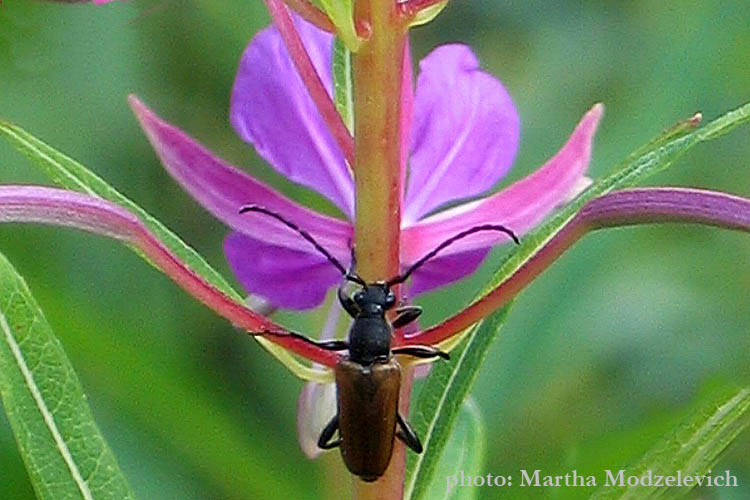
| Scientific name: | Epilobium angustifolium L. | |
| Synonym name: | Chamaenerion angustifolium (L.) Scop., Chamerion angustifolium (L.) Holub. | |
| Swedish name: | Mjölkört | |
| German name: | Schmalblättrige Weidenröschen | |
| Nederlandse naam: | Wilgenroosje | |
| English name: | Fireweed, Rosebay Willowherb | |
| Plant Family: | Onagraceae, Willowherb family, Dunörtsväxter |

|
| Life form: | Perennial from rhizome-like roots | |
| Stems: | Round or somewhat angular, usually unbranched; they often become reddish in the sun near the inflorescence | |
| Leaves: | Alternate, entire, lanceolate, and pinnately veined; the leaf veins are circular | |
| Flowers: | Magenta, 4 petals, stigma with 4 branches; inflorescence a long, terminal raceme of stalked flowers | |
| Flowering Period: | July, August | |
| Fruits: | Narrow, green to purple pod opening to release seeds with tufts of hair at the top; ripening in late summer | |
| Habitat: | woods, thickets, clearings and settlements |
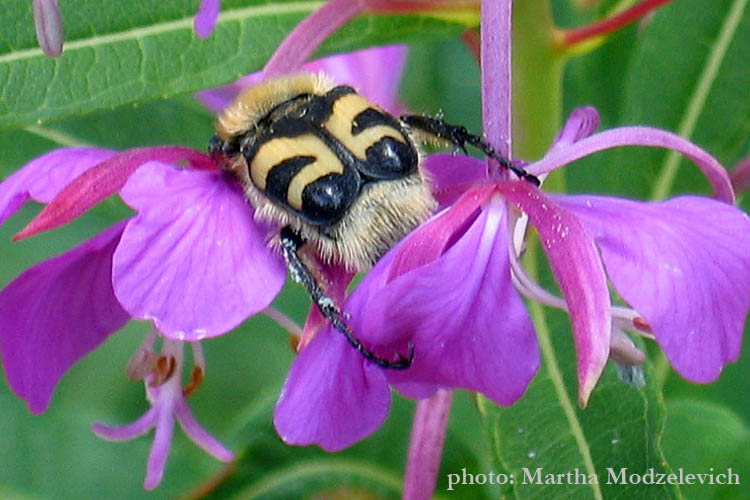
Derivation of the botanical name: Epilobium from the Byzantine Greek word epi, ἐπί, "upon", lobos, λοβός, λόβος "lobe", "a pod or capsule," as the flower and capsule appear together, the corolla being borne on the end of the ovary. angustifolium, angustus "narrow", i, connective vowel used by botanical Latin, folium, "leaf"; narrow leaf. Chamaenerion, Greek chamai, on the ground, lowly, creeping, dwarf; nerion, oleander; dwarf oleander. Chamerion has replaced the invalid name Chamaenerion published by Seguier in 1754.
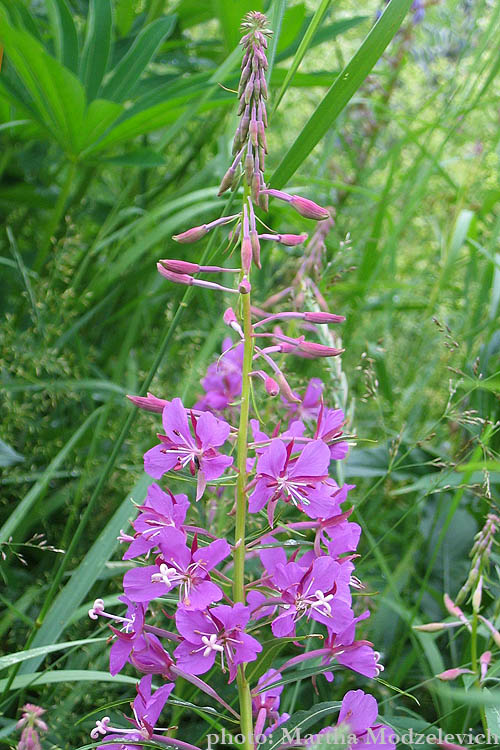
Date Picture Taken: July 11, 2008 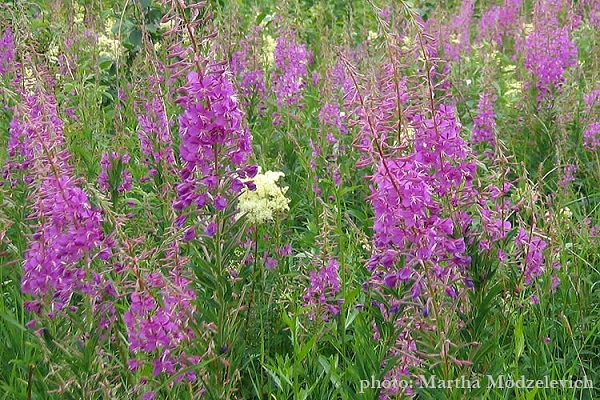
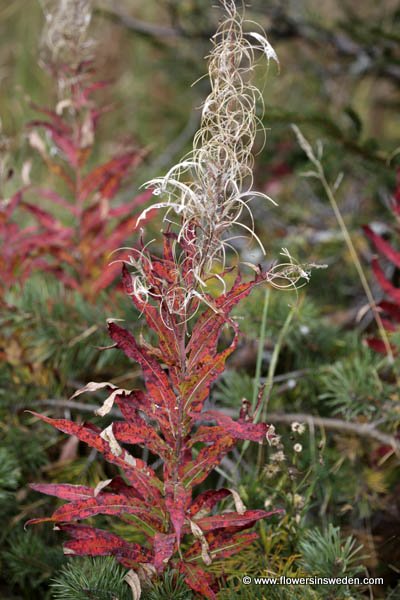
|